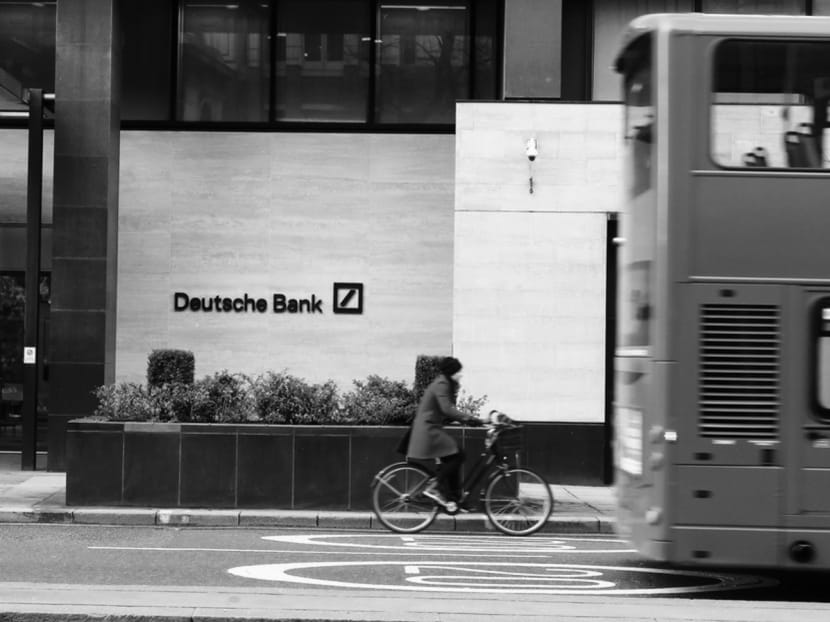Despite the dangers, I want to get back on my bike to work
After writing last week about my latest bike accident, I received a fat virtual mailbag.

A woman cycling behind a London bus. After testing the various options, Ms Kellaway concludes that riding a bicycle is the cheapest, quickest and most pleasant way to get to work. Photo: REUTERS
After writing last week about my latest bike accident, I received a fat virtual mailbag.
Half the messages came from well-meaning people telling me I was insane to cycle in London and urging me to learn my lesson.
The other half came from equally well-meaning people who wrote: What bad luck! Hope you’re back on your bike soon.
As a result, I am having to face a question I usually ignore: Should I hang up my helmet and high-visibility jacket for good? And if so, how am I meant to get to work?
In the past three weeks, I have been experimenting with various ways of covering the 7.2 kilometres from my house in east London to the Financial Times office in Southwark — Tube, train, Uber, feet, bus and a combination of the above.
I have also studied the literature, which is not especially encouraging. A long commute can leave you angry, depressed, cynical, possibly prone to heart attacks and musculoskeletal disorders — especially if you travel immobile on your bottom.
According to Google Maps, there are various options for my rush-hour commute, ranging in time from 31 minutes (cycling) to 88.
After cycling and driving — not an option as I do not have a parking space at the office — Uber is the next fastest.
So on Day One, I summoned a car, which was at my door in three minutes, and I bundled in feeling optimistic. Some 20 minutes later, in solid traffic on the Hackney Road, I felt less so.
After 47 minutes I arrived at work £16.53 (S$32) poorer, feeling stressed and slightly sick, having made the mistake of trying to do my emails in the back of a Toyota Prius.
Resorting to public transport, the quickest route recommended by my smartphone involved taking a bus to Old Street where I joined the 3.7 million other people who use the Tube to go to work.
I wedged myself onto a southbound train in a space so tiny there was no room to even squint at my phone, let alone read a newspaper.
How do you bear this, I wanted to shout at the packed carriage. Instead, I stared at their impassive faces. They bear it because they have no choice. They bear it because they are used to it.
The whole journey took 51 minutes, but felt even longer, as changing from one form of transport makes it harder to do the journey on autopilot — which is the only way commuters cope.
Next I tried the overground train, involving a longish walk at each end. This was marginally less crowded, and did not mean going almost 20 metres into the bowels of the earth.
But the human zoo of Liverpool Street station at rush hour is a downer and the trains are not very frequent.
On the way home, I just missed one, and the 10 minutes I had to wait distressed me far more than made any sense.
The next day I took the number 48 bus the whole way and sat upstairs at the front, read the paper, did some emails and then stared out of the window admiring first the buildings known as the Gherkin, and the Shard.
Yet when I arrived at work 62 minutes and 23 stops later, I felt more like an old-age pensioner on a day trip than an eager journalist ready for work.
And so that left walking. I set out on a gorgeous sunny morning from my house and arrived at work 83 minutes later, feeling self-satisfied and full of the joys of spring.
Yet by the evening I had already lost heart, and slunk back home by train. If I had nothing else to do in my life I might be prepared to spend nearly three hours legging it to and fro across London every day — but as it is, I do.
So that just leaves the bike, which is quickest by far, the most pleasant and almost the cheapest way of getting to work.
It is true that cycling is the worst commute for your hair-do and adds to your general state of bedraggledness on the 106 days on which it rains in the capital.
Yet only by bike do you arrive in the perfect frame of mind for working — with senses sharp from having dodged lorries and feeling thoroughly alive.
Alas, feeling alive as you whizz along can be followed by failing to be so. And this is what terrifies me.
Cyclist deaths in London are falling — especially per journey — but still more than a dozen cyclists die each year and about 400 are seriously injured.
I know to avoid car doors and lorries turning left. I wear all the safety gear.
And yet I have had three accidents requiring a visit to a hospital in 10 years, each one different.
Does that make me a bad risk? I do not know the exact answer to that, but I fear it is not good.
And yet in the end, any cold-headed assessment of risk misses the point. The longer I suffer the hardships of the alternative ways of getting from A to B, the more likely it is that I will simply stop asking if it is mad to cycle in London and get back on my bike, as soon as the physio will let me. FINANCIAL TIMES
ABOUT THE AUTHOR:
Lucy Kellaway is associate editor and management columnist at Financial Times.






